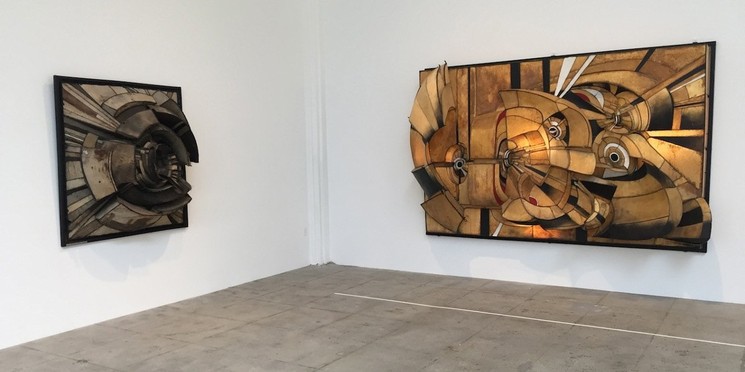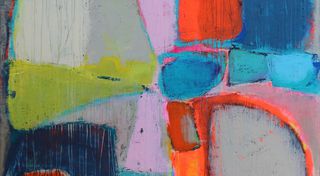

Biography
Lee Bontecou is a pivotal American artist of the 20th century, primarily known for her abstract wall sculptures incorporating reliefs, suspended structures, and miniatures. Her large-scale works, with dark tones and menacing organic forms, are composed of accumulations of shaped canvases, leather, porcelain trinkets, metal grids, and conveyor belts. These hybrid pieces, at the intersection of architecture, machinery, and the human body, have become a unique artistic signature. Through her work, Bontecou explores themes such as space, war, and the interaction between humans and technology—concerns that still resonate today with contemporary artists like JR, who integrate sociocultural and environmental issues into their works.
Trained at Bradford Junior College and the Art Students League of New York (1952-1955), Lee Bontecou studied under sculptor William Zorach before learning welding at the Skowhegan School of Painting and Sculpture in 1954. Deeply marked by the horrors of World War II and her parents' involvement in the war effort, Bontecou developed a particular sensitivity to themes of destruction and rebirth—a theme also found in the work of contemporary artists such as Banksy and Rodrigo, who address conflicts and cultural identities through installations and engaged artworks.
In the 1960s, Bontecou revolutionized sculpture by experimenting with industrial and recycled materials, notably repurposed canvases and found objects, echoing the approach of the Dadaist avant-garde. Her discovery of the blowtorch as a creative tool allowed her to produce a characteristic black soot, reinforcing the raw and expressive aspect of her works. At that time, she exhibited alongside major figures of contemporary art and influenced a new generation of artists engaged in materiality and spatiality.
A professor at Brooklyn College from 1971 to 1991, Bontecou moved to Pennsylvania in 1988, where she continued her artistic work in a more private setting. Her 2003 retrospective, organized by the Hammer Museum in Los Angeles and the Museum of Contemporary Art in Chicago, and later presented at MoMA in 2004, marked her return to the international art scene. Today, her work is considered a crucial milestone in art history, influencing contemporary artists who explore materiality and the tension between the industrial and the organic.
At a time when collaborations between artists and brands are gaining new prominence, Lee Bontecou's legacy continues to inspire. Her pioneering work in the exploration of forms and materials resonates with contemporary concerns of many creators rethinking the interactions between art, technology, and the environment, cementing her influence in an ever-evolving artistic dynamic.
Nationality




